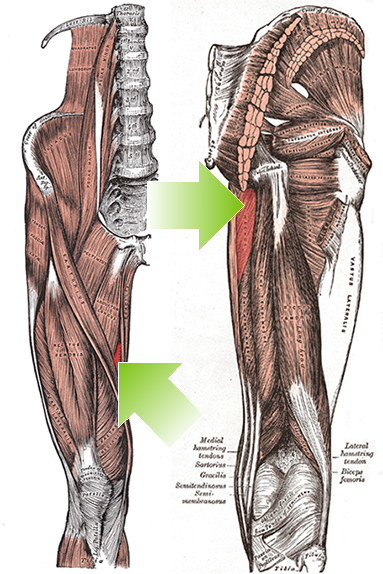The Adductor Magnus; Not just for adduction anymore...
/
Yet another paper (1) to support the notion that the adductors (particularly the adductor magnus, in this paper), act as external rotators (especially eccentrically), not internal rotators as is commonly purported in many anatomy texts (2) . Remember that the lower extremity is internally rotating (as a whole) from initial contact to midstance and externally rotating from midstance to pre swing. SOMETHING needs to help attenuate some of that internal rotation (and pronation) that occurs during the 1st part of stance phase and assist in external rotation (and supination); now you can add the adductor magnus to the popliteus, deep six external rotators, anterior and posterior compartments of the lower leg to the hamstrings and quads.
"This study suggests that adductor magnus has at least two functionally unique regions. Differences were most evident during rotation. The different direction-specific actions may imply that each segment performs separate roles in hip stability and movement. These findings may have implications on injury prevention and rehabilitation for adductor-related groin injuries, hamstring strain injury and hip pathology."
1. Benn ML, Pizzari T, Rath L, Tucker K, Semciw AI1 . Adductor magnus: An emg investigation into proximal and distal portions and direction specific action. Clin Anat. 2018 Mar 9. doi: 10.1002/ca.23068. [Epub ahead of print]
2. Leighton RD. A functional model to describe the action of the adductor muscles at the hip in the transverse plane.Physiother Theory Pract. 2006 Nov;22(5):251-62.



















